How to Make DIY Charger Plates for Christmas
Are you styling a Christmas table for entertaining this holiday season? Want to add a festive item to your table? Let me show you how to make DIY charger plates for Christmas.
These DIY charger plates will add color and pattern to your Christmas table. Another good thing? Once you know how to make them, you can adjust for any holiday or event.
Chargers can add to your event theme and the style of your table. They can make your place settings more elegant and dressy or casual and festive. It all depends on the fabric that you choose.
This was the first time that I have made DIY charger plates. It had such a big impact on my Christmas table that I can tell you it will not be the last time.
This project was so easy and fun. It was also very inexpensive.
As a bonus, welcome to the Amazing Creators Holiday Blog Hop! As a special treat today, I am joining a group of my friends to share an abundance of holiday ideas. From recipes to decorating ideas to tablescapes and more, I am sure you will find ideas and inspiration for your holiday celebration. Once you are finished visiting everyone, you will have a sleigh full of holiday ideas!
Follow along to see all of the amazing Holiday Inspiration. All the links to my creative friends’ posts are at the end of the blog. If you are joining me from Rosemary of My Home and Travels, then welcome and have a great time.
Recently, I shared this year’s Christmas tablescape using my DIY charger plates. Don’t you think they are the cutest?
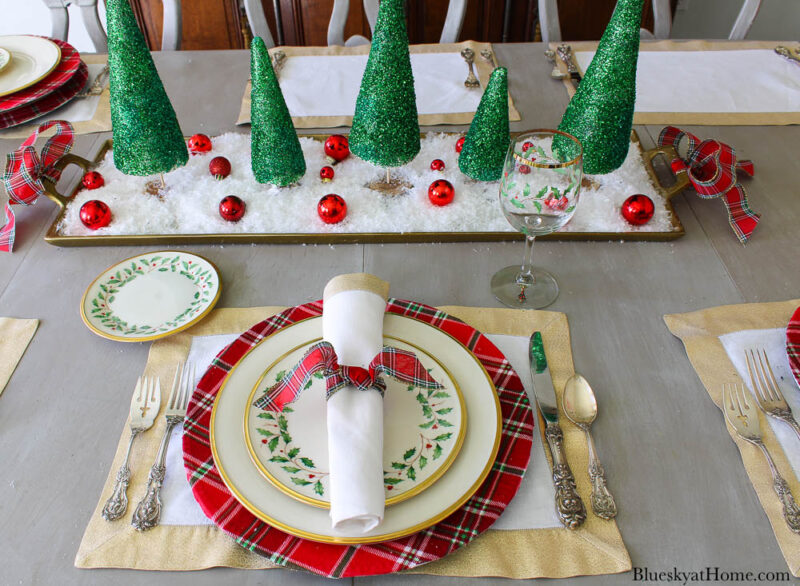
I first saw this idea from Crissy of First Day of Home. Immediately, I knew I wanted to make some plaid DIY charger plates for my own Christmas tablescape.

Here is how I made my DIY charger plates for Christmas.
Supplies for the Charger Plates
The list of supplies you need for this project is short. You may have some of the supplies on hand. I already had everything I needed except for the plaid fabric. I know that you could use paper napkins, but I’m going to focus on using fabric.
First, decide how many chargers you need for your event. I needed eight.
- fabric of your choice of color and pattern. I knew that I wanted red plaid. I also knew that cotton would be the best fabric. Unfortunately, the pattern and color I liked best was in a flannel. It acutally worked just fine. I bought 1 1/2 yards just to be sure I had enough. I did have some leftover.
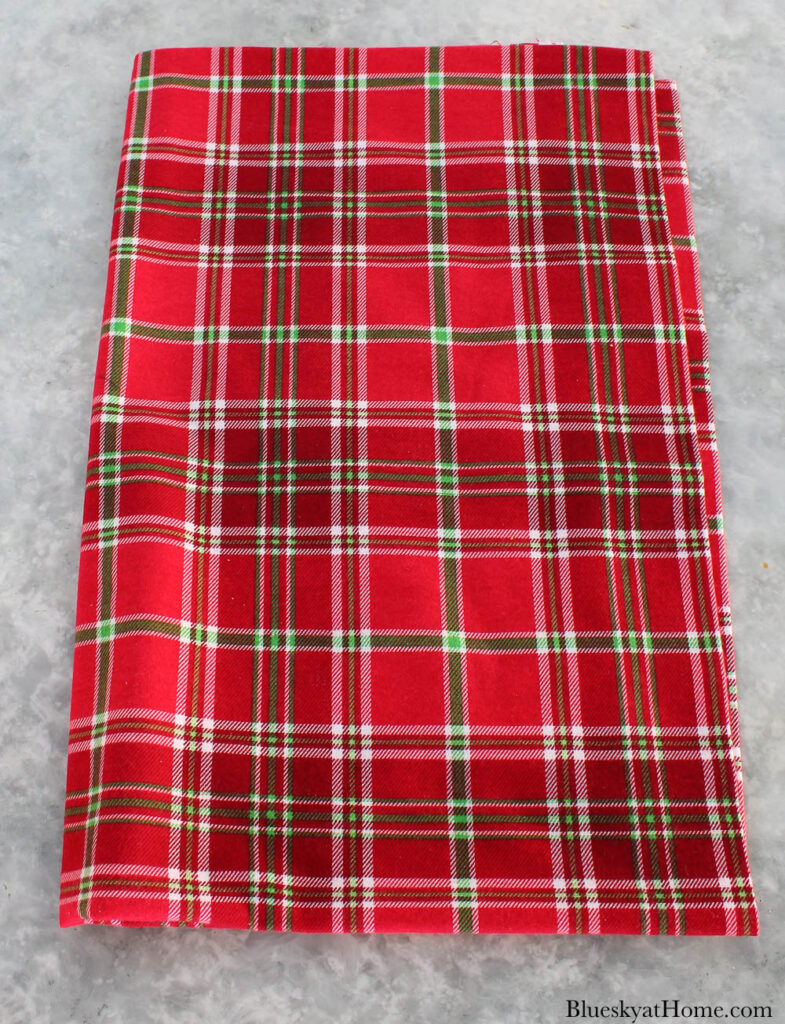
- the number of chargers you need. I needed eight and had six on hand. I bought two new ones at Dollar Tree. You can also find charger plates online. Be sure to get plain, simple ones.
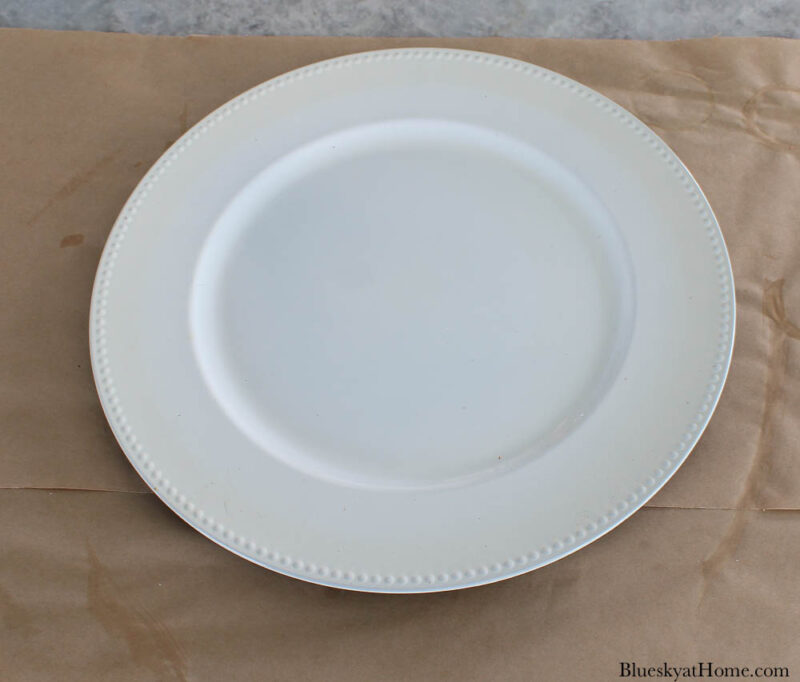
- sewing scissors
- Fabric Mod Podge
- a foam brush or paint brush or Mod Podge brush applicators. I had the Mod Podge brushes on hand so I used them. I really liked how easily they worked and they cleaned up better than the foam brush.
Steps to Making the DIY Charger Plates
This is the process that seemed the easiest to me. I found it quickest to complete the chargers in an assembly~style process. I’ve tried to break down the process as much as possible for you.
Step 1 – Cover your work surface.
Step 2 – Lay out your fabric. If there are wrinkles, iron them out.
Step 3 – Place a charger right side up on your work surface. The white film was coming off some of my chargers, so I pulled off as much as possible.
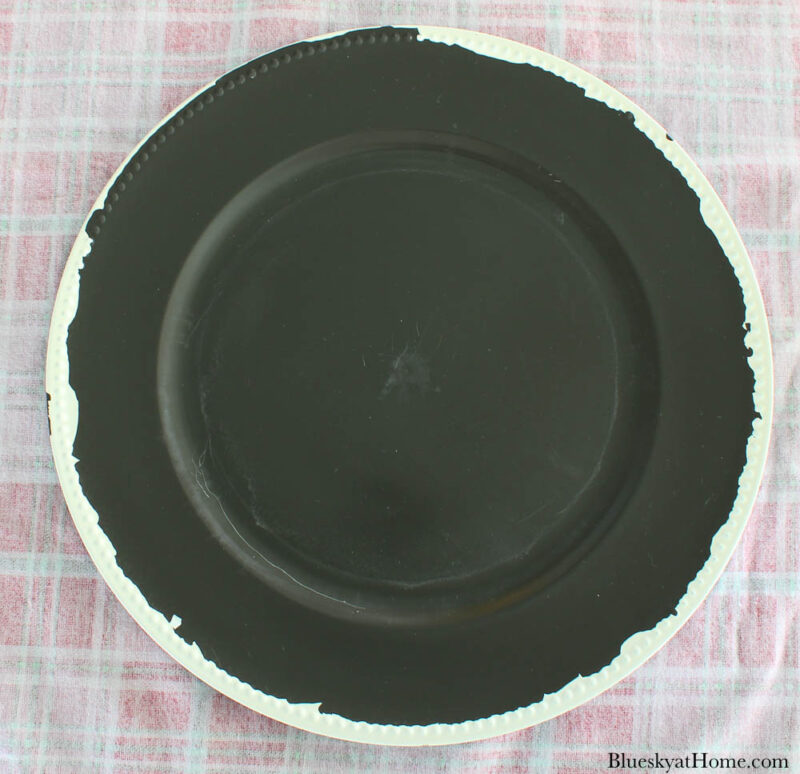
Step 4 – Lay your fabric, right side up, on the charger. Position the fabric with the edge and side is on the fabric. You want to get the most charger covers out of the fabric you have. Make note of where the fabric is on the charger, then fold it away from the charger.
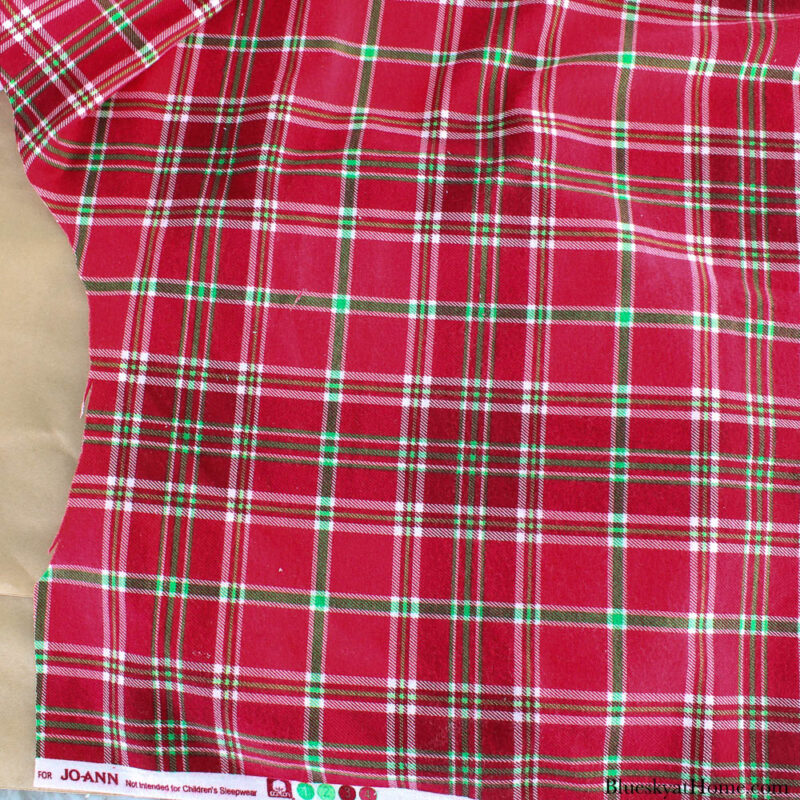
Step 5 – Pour some of the Fabric Mod Podge into a small plastic or glass cup. Using the brush, apply the Mod Podge in long strokes on the charger. Cover all charger surface completely.
I started out using a foam brush, but switched to the Mod Podge brush, which I liked much better.
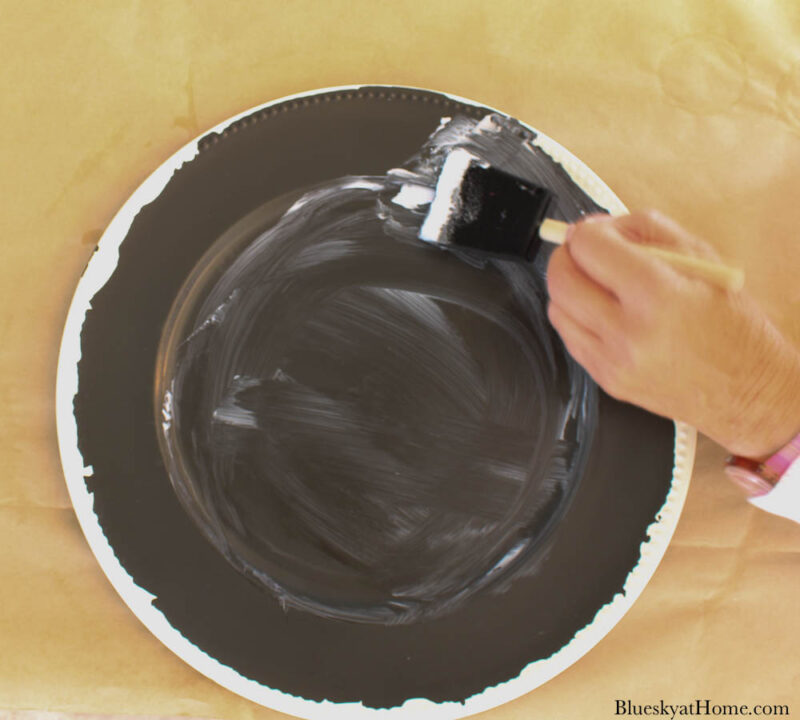
TIP: You can apply a bit more Mod Podge on the edges.
Step 6 – Carefully place the fabric on the charger. Use your hands to gently press the fabric down to the charger all the way to the edges. Press the fabric down the edges of the charger.
Step 7 – Cut the fabric around the charger with about 1/2-1-inch allowance. Set aside to dry. Repeat with all your chargers.
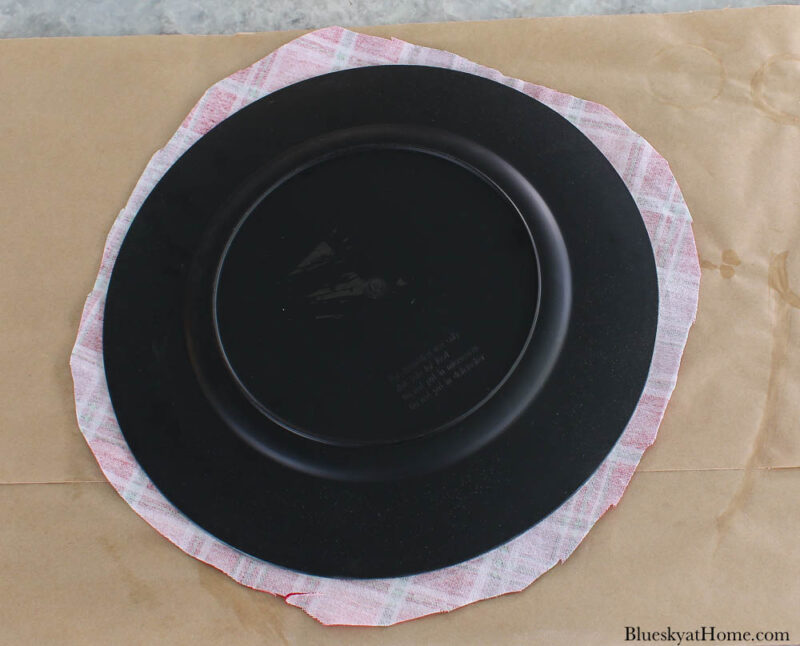
Step 8 ~ Once the Mod Podge is dry, turn the charger over. I found it easiest to cut away the excess fabric by hanging the charger over the kitchen counter. Cut the excess fabric as close to the edge of the charger as possible. Turn the charger over and trim any other excess fabric.
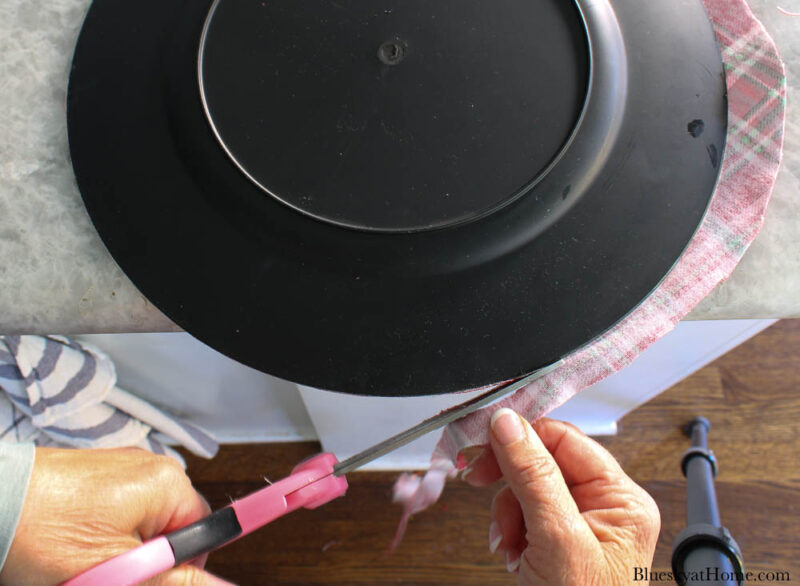
Step 9 ~ If you like, apply a small amount of the Mod Podge to the fabric at the rim of the charger. Set aside to dry.
TIP: Wash your Mod Podge brush in a small amount of dish soap and water. Reshape and allow to dry.
I completed this project in about 1 1/2 hours. That included drying time.
Using Your Christmas Charger Plates
In setting my Christmas tablescape, I placed the red plaid chargers on our white linen placemats with gold trim.
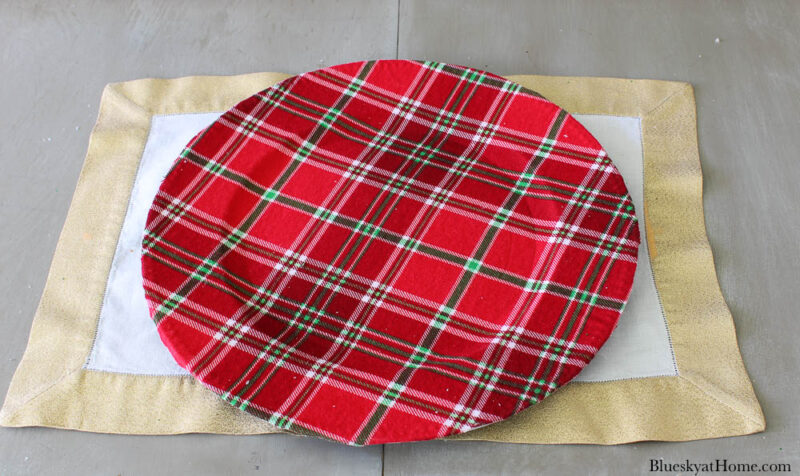
Then came the dishes, silverware, glasses, napkins, and more plaid ribbon as napkin rings.
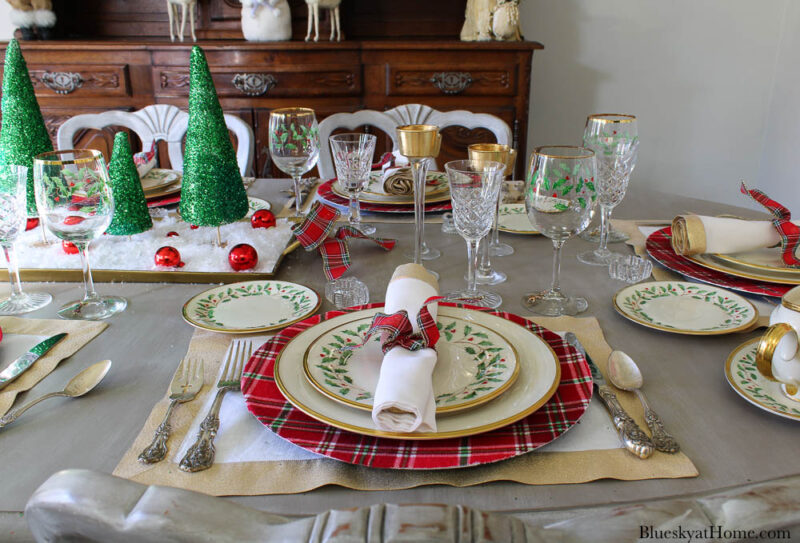
If you have never used Mod Podge for decoupage projects, then this is a time to try it. If you have never decoupaged fabric, then try it, too. I plan at some time in the spring to use this method for a springtime tablescape.
Please visit my participating friends, starting with Mary Anne from House of Mar and her fun gingerbread house party.
Don’t want to forget the directions? Be sure to PIN this project. I’m sure you’ll want to try it.
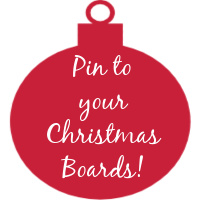
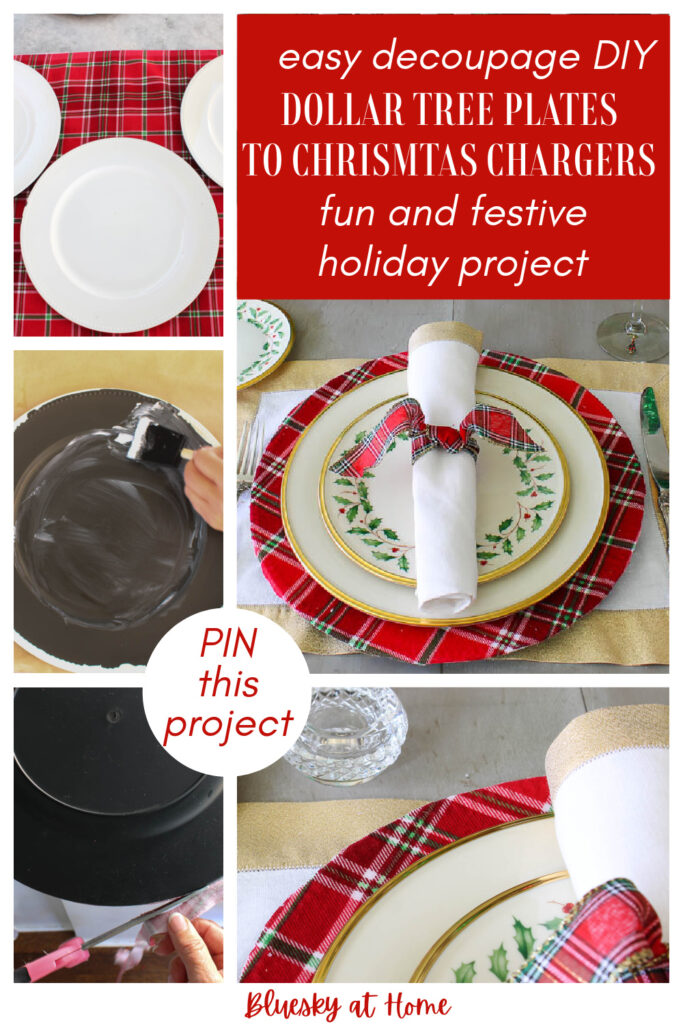

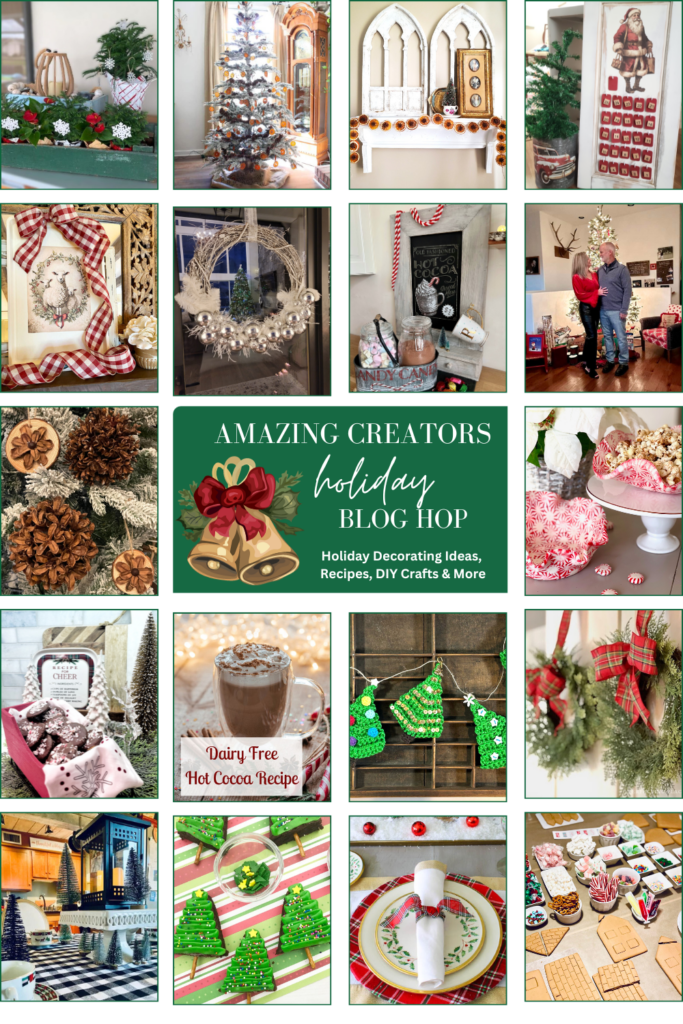
- “Snow” Place Like Home for the Holidays from Kimberly at From Farmhouse to Florida
- Star Anise Garland with Orange Slices by Cindy from Cloches & Lavender
- DIY Dried Orange Slice Ornaments by Sue from Shop at Blu
- DIY Christmas Countdown Calendar by Kristin from 5th Sparrow No More
- Repurposed Cookie Sheet Christmas Sign by Kim from Exquisitely Unremarkable
- Elegant Winter Wreath by Crystal at Sweet Valley Acres
- The Best Christmas Decor Ideas for Decorating Your Home by Rachel from Tea and Forget Me Nots
- The Perfect Gifts for Couples to Give Each Other by Sharon from Now Choose Life
- Nature Inspired Wood Slice & Pinecone Christmas Ornaments from Donna at An Organized Season
- Peppermint Christmas Bowl with Popcorn by Maria from Pure Happy Home
- Homemade Christmas Thin Mint Cookies by Kristy from At Home With Kristy
- Crochet Christmas Tree Pattern from Sara at Birdz of a Feather
- The Best Kitchen Christmas Decorating Ideas for a Cozy Home by Kim at Perfecting Places
- A Holiday Farmhouse Kitchen Table from Linda at Bushel and a Pickle
- Christmas Tree Brownies from Rosemary from My Home and Travels
- DIY Charger Plates for Christmas from Carol at Bluesky at Home
- A Holiday Gingerbread House Party by Mary Anne from House of Mar

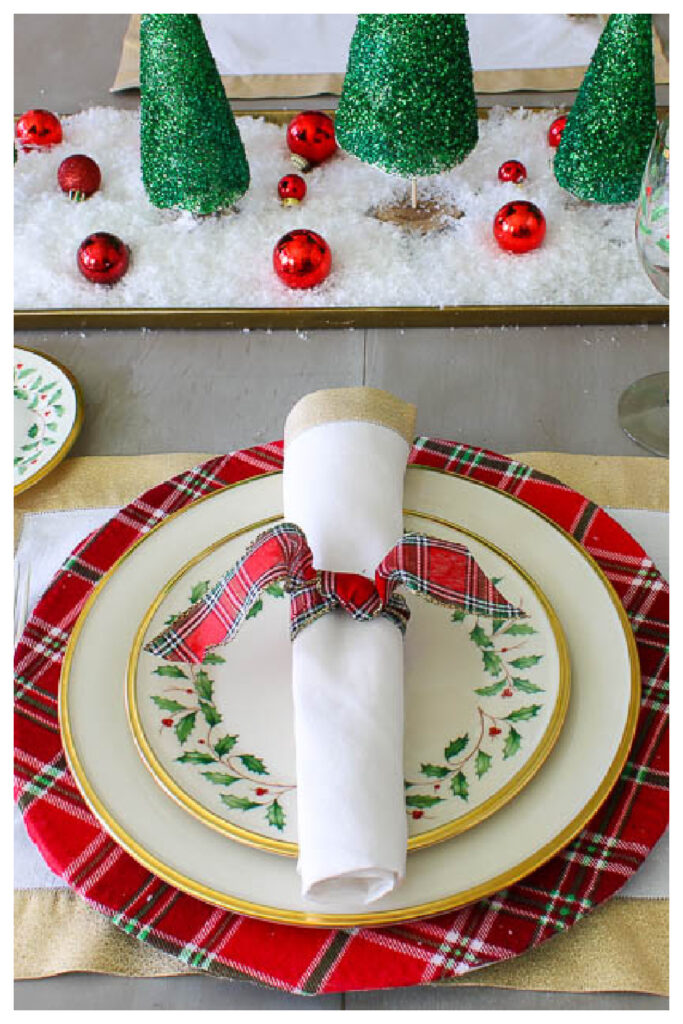
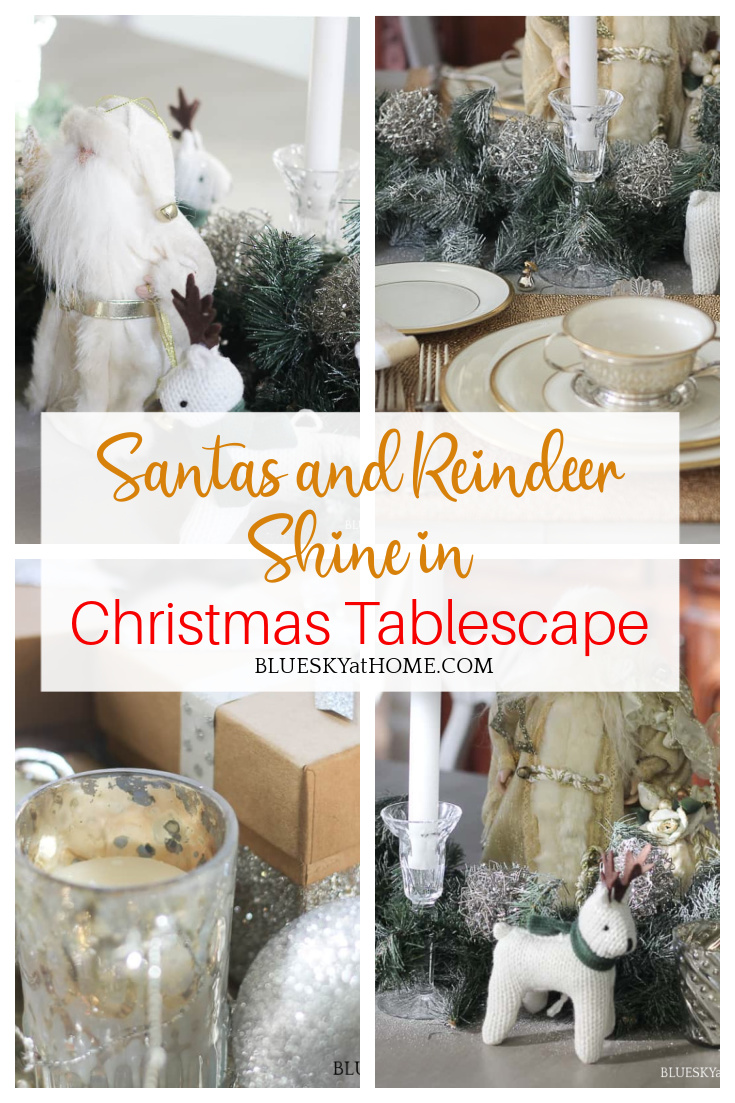
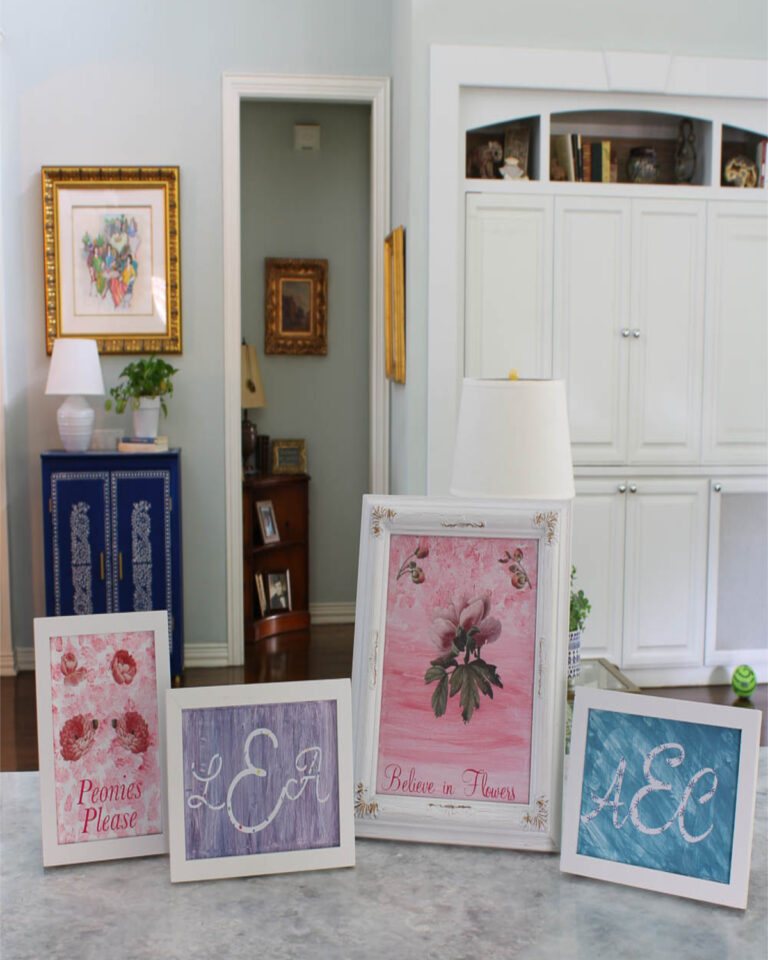
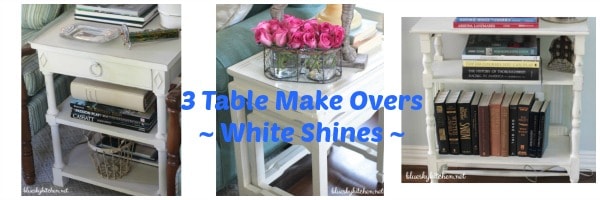
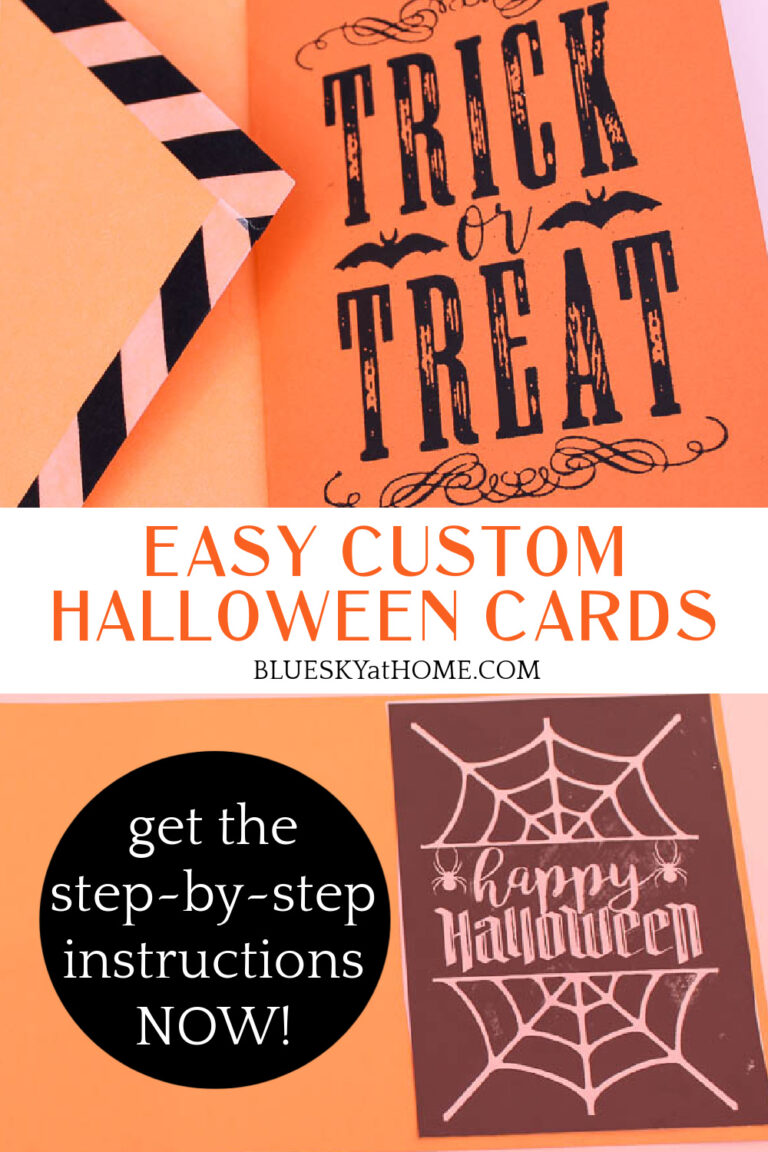
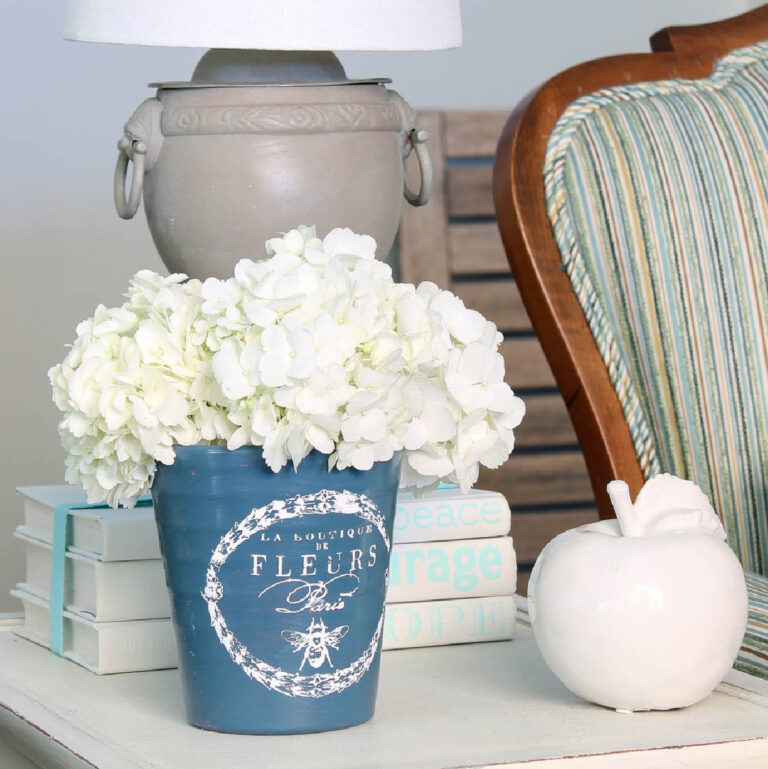
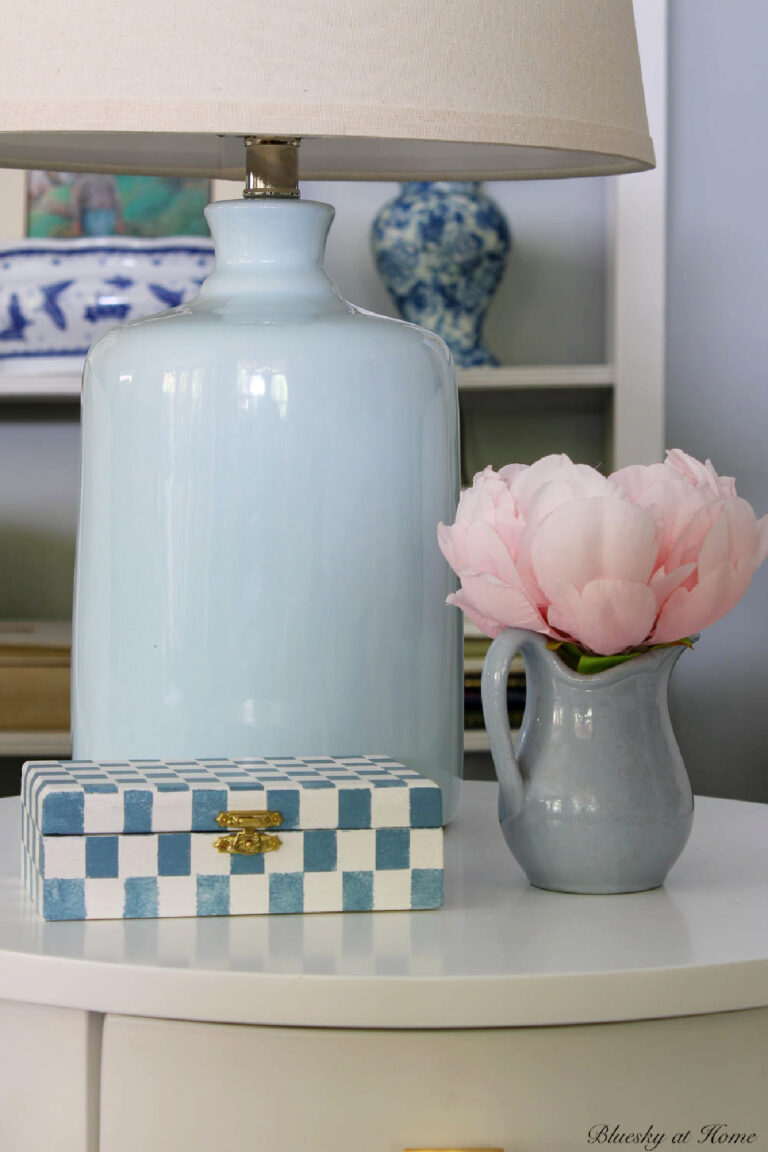
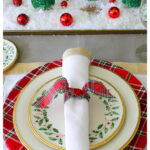
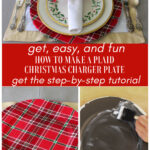
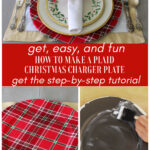
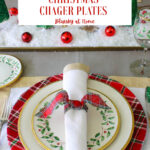
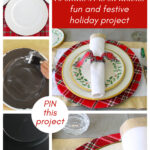
Carol, I love Christmas plaids, and your chargers make your table so pretty and festive!
I love having chargers to match ALL of my dishes and this is such an easy way to do them. Chargers can be so expensive and Dollar Tree is always a go-to place for these.
These chargers turned out so beautiful! Love the plaid and they sure make the table sparkle!
This is an affordable way to add color and detail to a Holiday table. Just Lovely Carol!
Hi Carol! I have the same China as you do! I think it’s so beautiful, and I love those chargers! I have never used fabric and Mod Podge, but I want to try this! Thanks for the great idea and informative tutorial!
Oh my goodness Carol this is such a brilliant idea! I am definitely going to do this one because so many times I cannot find the right charger for a tablescape but I sure could find the fabric. Thanks for sharing.
What a difference that red plaid makes to the table setting. Simple but with a lot of impact.
This is a wonderful project, just think of the possibilities for every holiday!!
Great idea! I love the plaid that you chose–so festive!!
You are so right Carol. These chargers do add that special extra to your table!
These are so pretty Carol. I decoupaged with fabric once and it worked great. This gave me the thought to try it again. Thank you.
Such a wonderful and fun festive project; hard to believe this is the first time you’re making chargers! I love the fabric you chose; plaid is a holiday favourite around here.
Carol, your chargers are beautiful! I’ve only decoupaged with fabric one time, but as a fabric and dish junkie, I can see myself combining those favorites an awful lot in the future. Thanks for the inspiration!
What a great way to personalize a table setting! I adore the style charger plates add!
Thank you, Janet. I take that as high praise from a wonderful designer like you.
Brilliant! Certainly is better than $6-10 a piece for plaid chargers! Hugs and Happy Holidays!
Why did you not seal the fabric surface once the fabric was mod-podged to the charger? I’d think that leaving the surface unprotected would make it vulnerable to food spills and stains. Would it be right to use Mod-Podge or a spray sealer like Scotchgard?
I actually did seal the first one, but it made the fabric feel a little rough. The next one I did, I didn’t seal and it looked and felt better. I don’t think sealing the fabric is necessary. But it’s a really good question.
This is my table inspiration for this year. Thank you!!!! I have laid on the red this year too.
Oh, that makes me so happy. I’m thrilled my plaid tablescape inspired you.
I remember Crissy’s chargers! You did a great job and I love the plaid you chose. So cute. Great tutorial too. I need to remember this! Merry Christmas!
Thanks so much, Cindy. I love how they turned out. They definitely make a statement.
Would it work to use a rotary cutter to trim fabric from edge of plate?
Hi Glenda. That’s a good question. I never thought of using my rotary cutter. As long
as you have a cutting mat, I think it’s worth a try.
Would it work to use a rotary cutter to trim fabric around edge of plate?